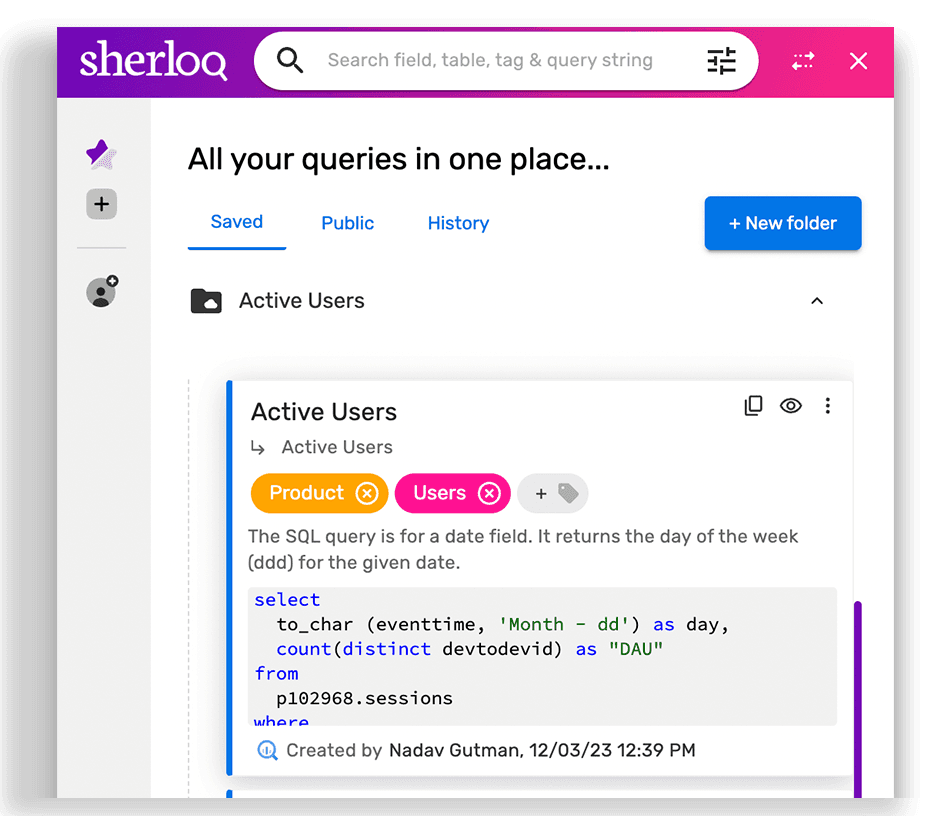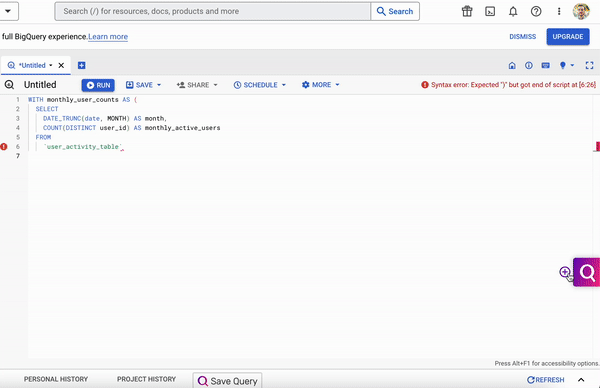Apr 15, 2024

Query Management is how organizations maintain and improve the value that database queries provide toward data analytics.
It sets policies and procedures to create standard queries and implement robust reviewing processes. Doing so ensures that queries provide accurate results in time.
Query management forms part of the overall data management process. It helps organizations develop comprehensive systems to ensure efficient data sharing across all teams while maintaining data security.
Why is Query Management Important?
With the ever-increasing volume of data and the growing need for making data-driven decisions, query management has become vital for streamlining data-related operations.
In organizational settings, technologies such as data lakes and warehouses use data sources like Enterprise Resource Planning (ERP) systems to deliver relevant information to the concerned teams. However, extracting the correct data from such sources is challenging and may require writing long queries.
Organizations should have a proper repository where developers can store and securely share these queries with other team members. Such a practice would save time and resources and increase the accessibility of data across different domains.
Just like developers use several methods of managing code, organizations should develop similar techniques to manage queries as data becomes the lifeline of the modern enterprise.
Moreover, complex queries often need updates. Such queries often have long documentation history, and new developers find it cumbersome to locate the source to understand the purpose and importance of updates. .
Situations like these may cause the developers to unintendedly introduce bugs in the original query and lower its quality. It will be detrimental to business performance if the query is a significant input to an automated business report.
Query management prevents such scenarios by having a robust documentation process throughout the query development lifecycle. It also saves time as different teams can find queries easily and use data more effectively due to shared glossaries and business definitions.
The following sections explain some of the components of query management that organizations need to consider to build an effective query management system.

Query Version Control
Query Version Control or Versioning is a common practice in software development where developers record all the changes they make to the original code.
Versioning commonly works through a check-in and check-out system. When the developer uploads the changed code version to the main branch, we say they’re checking in. Likewise, when developers download code from the main branch, we say they’re checking out.
Once a developer checks in, version tracking tools record the time and date of the change, the developer’s info, and comments describing the change. By doing so, version control keeps track of all the history.
The main code branch or the master branch is the last approved version of the code. It acts as the source, and developers use it as a baseline. Different developers can download a copy of the original code and make changes. Multiple developers can work on the changes simultaneously. Each copy of the code is called a child branch.
The change process works through change requests. Any team member can initiate a change request and assign it to specific developers. Developers will send the updated code to Quality Assurance (QA) for testing.
The QA reviews the code by putting it through multiple test cases, and if there are no issues, the updated code is merged with the master branch.
Since multiple developers can work on different changes simultaneously, one developer’s change may conflict with that of the other. Version control ensures that such conflicting changes are resolved before merging with the master branch.
Accessibility
The next component deals with accessibility. Sharing and security are the two major elements that come under this component. Organizations commonly have the challenge of ensuring collaboration among different teams while maintaining security standards.
Collaboration in query management requires a sharing mechanism that allows developers to share their code with other teams. However, sharing code with different groups may pose security risks.
Such risks may involve other team members introducing changes to the code without prior approval or getting access to confidential data.
As such, an effective query management system must have suitable protocols that define how sharing should take place without compromising security.
The protocols form part of the overall access management system, where specific members are responsible for granting and approving access and the level of privileges. For example, only particular members should have edit rights, while the rest may only have view rights.
Query and Data Management Framework
The larger the data organizations have to manage, the more complex the queries become. Dealing with them, therefore, requires companies to define a proper framework that aligns with their overall vision and mission.
Such data management frameworks have several aspects that help companies build a flexible and secure management process. The following sections give a brief overview.
Problem identification: Organizations should identify the problems they want to solve through query management. It helps in building more targeted solutions that are cost-effective and time-sensitive.
Creating goals and KPIs: After identifying the problems, companies should focus on defining clear goals to solve these problems. They also need to build business metrics or Key Performance Indicators (KPIs) to track goals’ progress throughout the process.
In query management, such metrics or KPIs can be the number of changes made to a query in a single sprint or the time it takes to complete a change request.
Defining Strategy: A clear road map should guide the stakeholders in achieving the defined goals. The road map is the strategy that the stakeholders will follow.
Target Operating Model (TOM): The TOM defines how an organization will implement the strategy. It helps determine the processes, technologies, people, cultures, etc., necessary to follow the defined strategy.
Assigning Responsibilities: Organizations should assign responsibilities to the relevant stakeholders who will carry out the entire data management effort after determining the TOM. Every stakeholder should know what to do and to whom they are accountable.
Creating glossaries: Collaboration requires that each team understands the work of others. As such, a management framework requires a glossary of technical terms every team member can use as a reference.
Managing Risks: Risk management is a vital element of any framework. It requires organizations to build backup plans in case of failures and develop controls to avoid incidents like data breaches, data loss, malicious code, etc.
How can Sherloq help in query management?
Query management is a complicated process. However, organizations can make it easier using specific tools that provide relevant query management features. One such tool is Sherloq.
It is a simple add-on that lets you quickly save, share, and simplify your queries to speed up the query-building process. Manage query snippets by keeping them in folders and view query history to track usage rates and user info.
So get your free sherloq add-on now and make your queries faster and better in no time!

Get Sherloq Free

